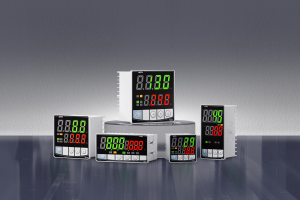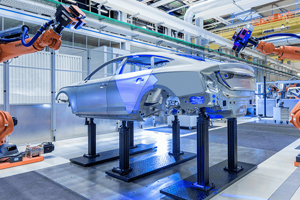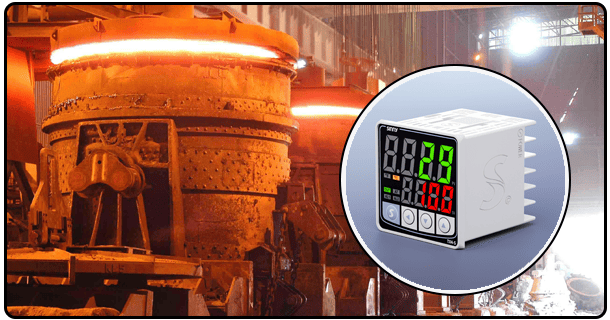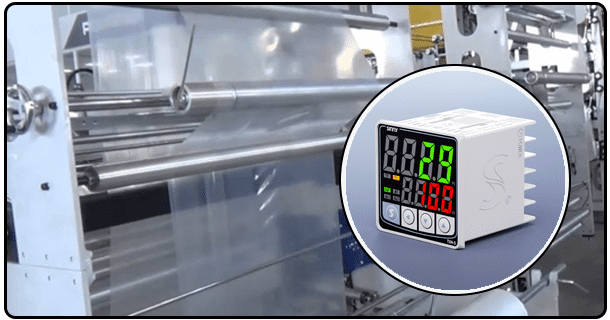Comprehensive Guide to Programming a PID Controller for Optimal Performance
1. Introduction:Temperature Controller
Proportional Control (P) Proportional control depends on the present error. The controller output is directly proportional to the error signal. The proportional gain (Kp) determines the response speed and the system's overall stability. A high Kp can lead to a faster response but may cause overshooting and instability.
Integral Control (I) Integral control addresses the accumulation of past errors. By integrating the error over time, the controller can eliminate steady-state errors. The integral gain (Ki) affects the speed at which the error is corrected. However, excessive Ki may result in slow response times and oscillations.
Derivative Control (D) Derivative control predicts future errors by considering the rate of change of the error. This component helps dampen system oscillations and enhances stability. The derivative gain (Kd) influences the damping effect. A high Kd can reduce overshoot but may cause noise sensitivity.
2. Setting Up the Development Environment
Before programming a PID controller, it is essential to set up the development environment.
Choosing the Programming Language Select a programming language that suits your needs and expertise. Common choices include C, Python, and Arduino. Each language has its advantages and is suitable for different applications.
Selecting the Hardware Platform Choose a hardware platform for your PID controller. Popular options include Arduino, Raspberry Pi, and PLCs (Programmable Logic Controllers). Each platform offers various features and capabilities, so select one that matches your project requirements.
Installing Necessary Software and Libraries Install the required software and libraries for your chosen programming language and hardware platform. For example, if using Arduino, you would install the Arduino IDE and relevant libraries.
3. PID Algorithm Implementation
Implementing the PID algorithm involves several steps, from initializing variables to writing the control loop.
Initializing Variables Define and initialize the necessary variables, including the setpoint, PID gains (Kp, Ki, Kd), and process variables (e.g., error, previous error, integral term).
Writing the PID Control Loop The PID control loop calculates the control output based on the error between the setpoint and the actual process variable. The steps include:
Calculating Error Terms: Compute the error as the difference between the setpoint and the process variable.
Calculating Proportional Term: Multiply the error by the proportional gain (Kp).
Calculating Integral Term: Add the error to the integral term, then multiply by the integral gain (Ki).
Calculating Derivative Term: Compute the difference between the current error and the previous error, then multiply by the derivative gain (Kd).
Summing PID Terms: Add the proportional, integral, and derivative terms to get the control output.
Applying Control Outputs: Use the control output to adjust the process variable.
4. Tuning the PID Controller
Tuning the PID controller is critical to achieving optimal performance. Several methods can be employed for this purpose.
Manual Tuning Adjust the PID gains (Kp, Ki, Kd) iteratively while observing the system response. This trial-and-error approach can be effective but may be time-consuming.
Ziegler-Nichols Method An empirical tuning method that involves setting Ki and Kd to zero, increasing Kp until the system oscillates, and using specific formulas to calculate Ki and Kd. This method provides a good starting point for tuning.
Software-Based Tuning Utilize software tools like MATLAB and Simulink for more precise tuning. These tools offer automated tuning algorithms and simulation capabilities, allowing for more accurate adjustments.
5. Simulation and Testing
Simulation and testing are essential phases in PID controller programming. These steps ensure the controller performs as expected under various conditions.
Simulating the PID Controller Use simulation tools to model the plant and PID controller. Analyze the system response to different inputs, such as step and frequency responses.
Analyzing System Response Evaluate the system's transient and steady-state performance. Key metrics include rise time, settling time, overshoot, and steady-state error. Adjust PID parameters based on the simulation results to achieve the desired performance.
6. Implementation
Once the PID controller design is validated through simulation, it can be implemented on hardware. This step involves real-world testing and fine-tuning.
Deploying the PID Controller on Hardware Load the control algorithm onto the hardware platform, such as a microcontroller or PLC (Programmable Logic Controller). Ensure proper interfacing with sensors and actuators.
Real-World Testing and Validation Conduct tests to verify the controller's performance under real operating conditions. Monitor the system response and compare it with simulation results.
Fine-Tuning Parameters Based on real-world performance, make necessary adjustments to the PID parameters. Real-world conditions may introduce uncertainties not accounted for during simulation, requiring further optimization.
7.Troubleshooting and Optimization
Even after successful implementation, continuous monitoring and optimization are essential to maintain optimal performance.
Identifying and Addressing Issues Common issues include overshoot, oscillations, and steady-state errors. Use diagnostic tools and techniques to identify the root cause of these problems.
- Setting a PID Controller
- Comprehensive Guide to Designing a PID Controller for Optimal PerformanceIntroduction























